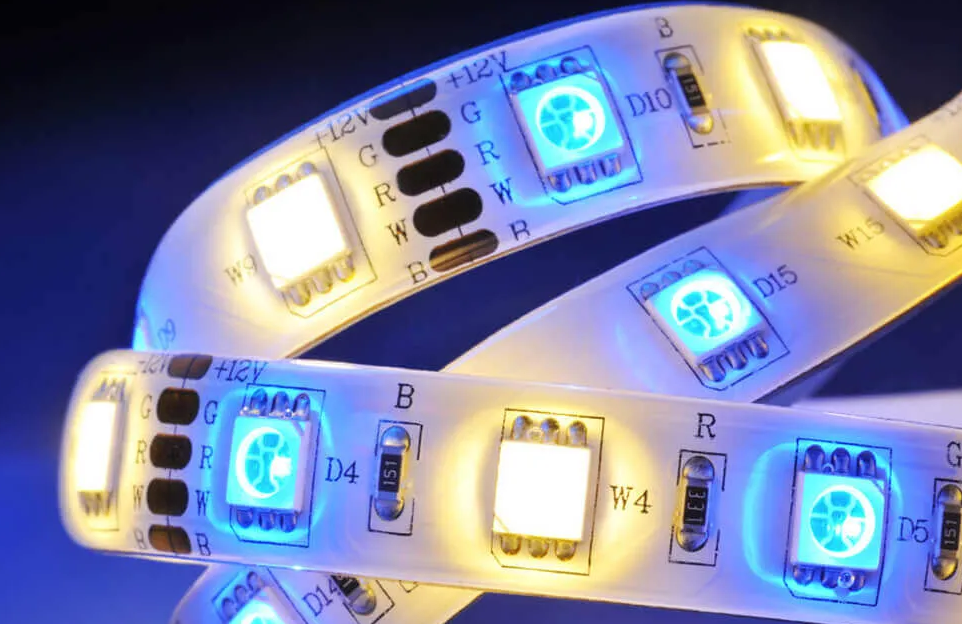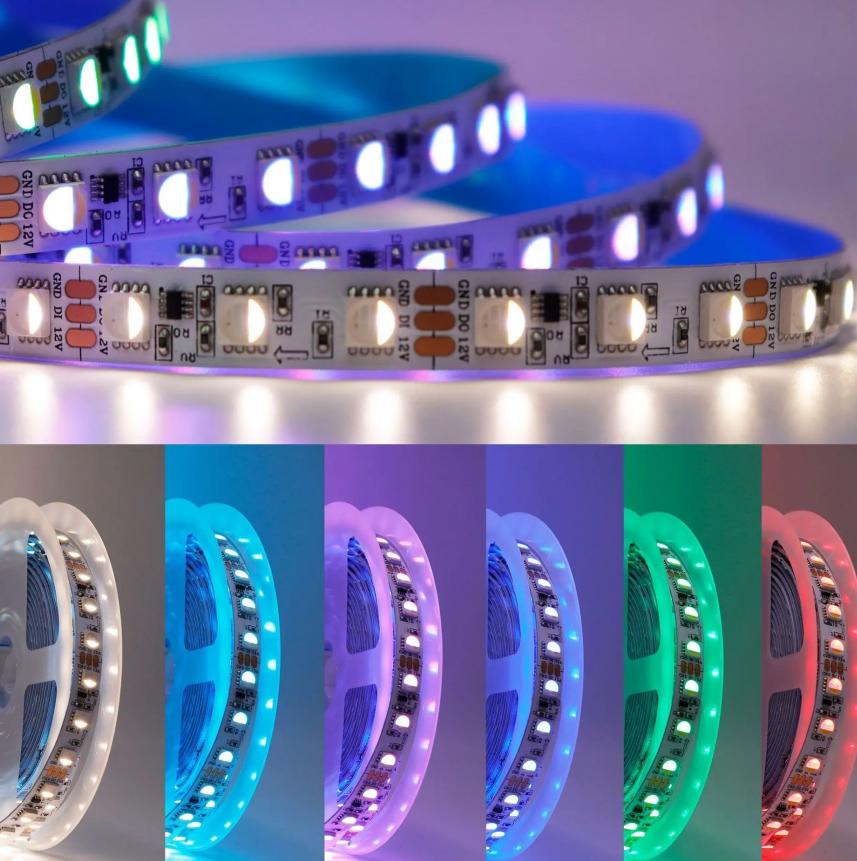Flexible LED printed circuit boards are a groundbreaking innovation in modern electronics, renowned for their unmatched versatility and reliability. Foundational to nearly every electronic device, PCBs facilitate essential electrical connections and provide structural support, particularly for LED lighting systems. The widespread adoption of flexible PCB designs signifies a significant industry shift towards more adaptable and space-efficient solutions. This evolution fosters pioneering applications across automotive, healthcare, and consumer electronics industries, where rigid PCBs traditionally limited design possibilities. Embracing flexible LED PCB technology enables seamless integration of advanced lighting features into diverse shapes and configurations, ushering in an era of highly adaptable and efficient electronic solutions that cater to the dynamic needs of today's technology-driven world.

Understanding Flexible LED PCBs
Definition and Basic Structure of Flexible PCBs
Flexible LED printed circuit boards (PCBs) are designed to bend and conform to various shapes and contours while maintaining functionality. Unlike traditional rigid PCBs, which use solid materials like fiberglass, flexible PCBs utilize flexible plastic substrates such as polyimide or polyester. These substrates allow intricate routing of electrical connections without compromising structural integrity.
Advantages Over Rigid PCBs
Flexible LED PCBs offer several key advantages over rigid alternatives:
- Flexibility and Bendability: They can be bent, folded, or twisted to fit into tight spaces or conform to curved surfaces, opening up innovative design possibilities.
- Lightweight and Space-Saving: Their thin and flexible nature makes them lightweight and compact, ideal for applications where size and weight are critical.
- Impact on Design Freedom: Flexible PCBs free designers from the constraints of rigid boards, enabling more creative and ergonomic product designs. They facilitate the integration of LEDs into unconventional shapes and configurations, enhancing both aesthetics and functionality.
Applications Across Industries
Consumer Electronics
Flexible LED PCBs are integral to various consumer electronics:
- Integration into Wearable Devices: Crucial for smart clothing and fitness trackers, they provide necessary flexibility and durability for user comfort and functionality.
- Role in Flexible Displays: In devices like smartphones and tablets, flexible PCBs enable foldable and rollable displays, offering enhanced portability and durability compared to rigid display technologies.
Automotive Industry
In automotive applications, flexible LED PCBs are transforming lighting systems:
- Use in Automotive Lighting Systems: They are used in headlights, interior lighting, and ambient lighting due to their ability to conform to complex shapes and provide uniform illumination.
- Benefits in Compact and Custom-Shaped Designs: Manufacturers utilize flexible PCBs to create custom-shaped lighting elements that seamlessly integrate into vehicle designs, enhancing both aesthetic appeal and functionality.
Medical Devices
Flexible LED PCBs are advancing medical applications:
- Applications in Medical Wearables: Used in health monitoring devices and wearable sensors, they meet critical requirements for flexibility and biocompatibility.

- Importance of Biocompatibility and Reliability: These PCBs adhere to stringent standards to ensure patient safety and device effectiveness, with materials selected for compatibility with the human body and durability in medical environments.
Flexible LED PCBs are catalysts for innovation across diverse industries. They enhance consumer electronics with sleek, durable designs, revolutionize automotive lighting with customized solutions, and improve healthcare through reliable medical devices. Their combination of flexibility, lightweight construction, and design freedom makes them indispensable in the evolution of modern electronic applications.
Best FPC's Technical Innovations and Features
Material Advances
Flexible circuits, also known as flex printed circuits (FPC), are advancing with innovative materials:
Types of Flexible Substrates: Polyimide (PI), commonly known as "Kapton," is the predominant material used in FPCs. It boasts exceptional thermal stability (>500°C), mechanical toughness, and resistance to chemicals, making it an ideal choice for applications requiring durability and reliability.
Conductive Traces and Insulation Materials: Ongoing advancements in conductive traces and insulation materials contribute significantly to the enhanced electrical performance and reliability of FPCs. These improvements ensure efficient signal transmission and protection against environmental challenges.
Manufacturing Techniques
The production of FPCs involves sophisticated manufacturing processes:
Roll-to-Roll Processing vs. Traditional Methods: Roll-to-roll processing offers a streamlined and cost-effective approach to producing FPCs. This method allows for continuous manufacturing on flexible substrates, ensuring scalability and consistent quality compared to traditional batch processing.
Challenges and Solutions in Assembly and Soldering: Assembling and soldering components onto FPCs pose unique challenges due to their flexible nature. Effective solutions, including appropriate stiffeners and innovative assembly techniques, are essential to achieving robust connections and reliability across diverse applications.
The evolution of flexible circuits and flex printed circuits is driven by continuous advancements in materials and manufacturing techniques. These innovations not only enhance the performance and durability of FPCs but also expand their applications across industries such as medical devices, automotive systems, and consumer electronics. Understanding these technical features is crucial for selecting and optimizing FPC solutions tailored to specific project requirements.
Design Considerations and Challenges
Design Flexibility
Designing flexible circuits (FPCs) requires leveraging advanced CAD/CAM tools:
Importance of CAD/CAM Tools for Flexible Designs: CAD/CAM tools play a crucial role in designing FPCs by enabling precise layout and routing of circuit traces on flexible substrates. These tools allow engineers to simulate and optimize designs for various bending and folding scenarios, ensuring compatibility with the intended application requirements.
Impact on Prototyping and Iterative Development: CAD/CAM tools facilitate rapid prototyping and iterative development of FPCs. Design modifications can be quickly implemented and tested, accelerating the product development cycle and reducing time-to-market for innovative electronic devices.
Durability and Reliability
Ensuring mechanical durability and reliability is critical for FPCs:
Factors Affecting Mechanical Durability: Mechanical durability of FPCs is influenced by factors such as flex cycles (number of times the circuit can bend before failure) and bending radius (minimum radius the circuit can bend without damage). Understanding these parameters helps in designing FPCs that can withstand repeated flexing without compromising performance.
Environmental Considerations: Environmental factors such as temperature fluctuations and moisture levels impact the performance and longevity of FPCs. Designers must select materials and coatings that offer robust protection against these elements to ensure reliable operation in various environmental conditions.
Future Trends and Innovations
Emerging Applications
FPCs are paving the way for new applications:
Integration with Internet of Things (IoT) Devices: FPCs are integral to IoT devices, providing flexible connectivity solutions that enable seamless integration into smart environments. They support sensor networks, data transmission, and device interconnectivity, contributing to the growth of IoT ecosystems.
Role in Next-Generation Display Technologies: FPCs are driving advancements in foldable and rollable display technologies. They enable the development of flexible screens that can be folded or rolled without compromising display quality, offering enhanced portability and durability in consumer electronics.
Technological Advancements
Innovative technologies are shaping the future of FPCs:
Flexible Hybrid Electronics: FPCs are increasingly integrated with sensors and actuators, forming flexible hybrid electronics that combine the benefits of flexible substrates with functional electronic components. This integration enhances the versatility and performance of FPC-based systems in diverse applications.
Potential for Stretchable and Conformal Electronics: Research is exploring stretchable and conformal electronics, where FPCs can stretch and conform to irregular shapes and surfaces. This innovation opens new possibilities in wearable electronics, biomedical devices, and adaptive electronic systems.
The evolution of FPCs is marked by advancements in design flexibility, durability, and integration with emerging technologies. As FPCs continue to evolve, they are expected to play pivotal roles in enabling next-generation electronic devices and systems across various industries, from consumer electronics to healthcare and beyond. Understanding these trends and innovations is crucial for staying ahead in the rapidly evolving field of flexible printed circuit technologies.
In Closing
Flexible printed circuit boards (FPCs) mark a revolutionary leap in electronics, offering unmatched design flexibility, durability, and integration capabilities. Utilizing materials like polyimide and advanced CAD/CAM tools for precise designs, FPCs drive innovation across industries. They streamline product development with rapid prototyping and iterative design, meeting rigorous durability and reliability standards in diverse environments. Future applications in IoT devices, foldable displays, and flexible hybrid electronics position FPCs at the forefront of technological advancement, extending their impact to smart devices, automotive systems, medical devices, and beyond. Mastering FPC capabilities is crucial for harnessing the full potential of adaptable electronic solutions in today's dynamic technological landscape.










 2024-06-04
2024-06-04
 BEST
BEST

.png)
.png)
.png)
.png)

.png)

